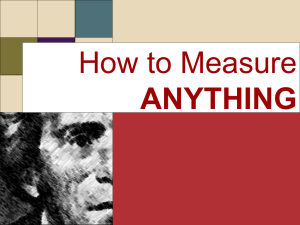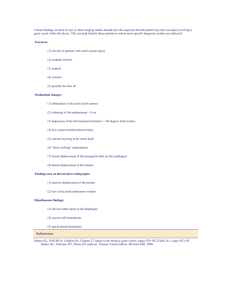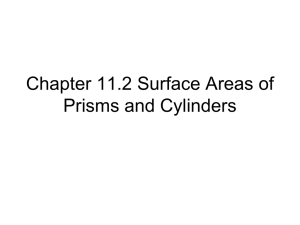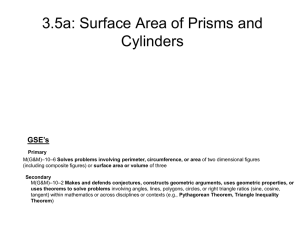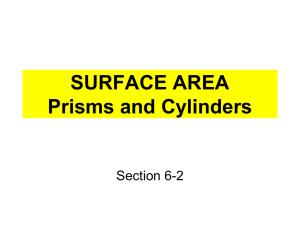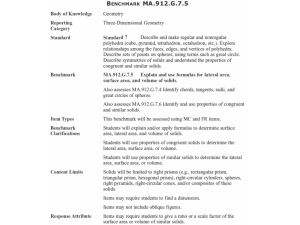Non-Physiologic Strain Patterns at the SBS: Lateral Strain
advertisement
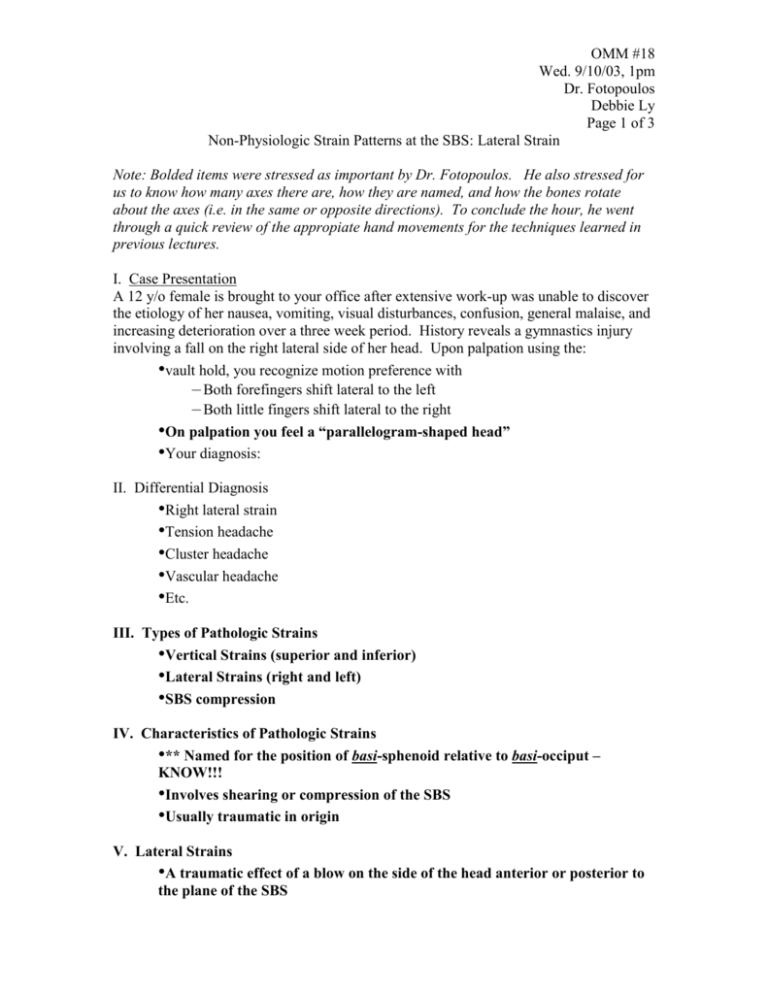
OMM #18 Wed. 9/10/03, 1pm Dr. Fotopoulos Debbie Ly Page 1 of 3 Non-Physiologic Strain Patterns at the SBS: Lateral Strain Note: Bolded items were stressed as important by Dr. Fotopoulos. He also stressed for us to know how many axes there are, how they are named, and how the bones rotate about the axes (i.e. in the same or opposite directions). To conclude the hour, he went through a quick review of the appropiate hand movements for the techniques learned in previous lectures. I. Case Presentation A 12 y/o female is brought to your office after extensive work-up was unable to discover the etiology of her nausea, vomiting, visual disturbances, confusion, general malaise, and increasing deterioration over a three week period. History reveals a gymnastics injury involving a fall on the right lateral side of her head. Upon palpation using the: •vault hold, you recognize motion preference with – Both forefingers shift lateral to the left – Both little fingers shift lateral to the right •On palpation you feel a “parallelogram-shaped head” •Your diagnosis: II. Differential Diagnosis •Right lateral strain •Tension headache •Cluster headache •Vascular headache •Etc. III. Types of Pathologic Strains •Vertical Strains (superior and inferior) •Lateral Strains (right and left) •SBS compression IV. Characteristics of Pathologic Strains •** Named for the position of basi-sphenoid relative to basi-occiput – KNOW!!! •Involves shearing or compression of the SBS •Usually traumatic in origin V. Lateral Strains •A traumatic effect of a blow on the side of the head anterior or posterior to the plane of the SBS OMM #18 Wed. 9/10/03, 1pm Dr. Fotopoulos Debbie Ly Page 2 of 3 •THESE ARE KNOWN AS “PARALLELOGRAM HEADS” •Imp’t: Sphenoid and occiput rotate in the same direction around two parallel vertical axes Through the body of the sphenoid – Through the foramen magnum of the occiput •Named by the direction of the base of sphenoid: – left lateral strain, the lateral shear occurs with the sphenoid base to the left and the occipital base to the right •Your hands form a parallelogram – your forefingers shift to one side, while your little fingers shift to the opposite side •Imp’t: In left lateral strain: – forefingers shift lateral to the right (sphenoid base turns to the left), and the little fingers shift to the left (occipital base turns to the right) •Imp’t: In right lateral strain: – forefingers shift lateral to the left (sphenoid base turns to the right), and the little fingers shift to the right (occipital base turns to the left) VI. Left Lateral Strain Exercise •Patient sticks tongue out of mouth and around toward their right ear •-or•Patient keeps eyes closed and looks over to the right OMM #18 Wed. 9/10/03, 1pm Dr. Fotopoulos Debbie Ly Page 3 of 3 VII. Right Lateral Strain Exercise •Patient sticks tongue out of mouth and around toward their left ear •-or•Patient keeps eyes closed and looks over toward the left VIII. SBS Compression •***Imp’t: There is approximation of sphenoid and occipital bases as they compress together along an anteroposterior axis •Anteroposterior axis is the same one as in torsions and sidebending rotations •Usually traumatic in nature XI. SBS Compression Palpatory Findings •Fingers of both hands approximate •The distance between greater wings of sphenoid and occipital lateral angles on both sides is reduced •This causes reduction in flexion/extension •Patient’s head will feel hard and limited in any motion of any kind Know your examples of physiological strain patterns (torsions, sidebending rotation) Know your examples of non-physiological (aka pathological) strain patterns (vertical strains, lateral strains, SBS compression) Last but not least, don’t forget to: DO THE MARIO!

